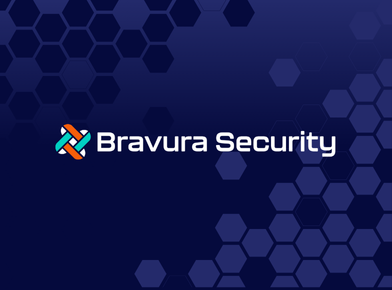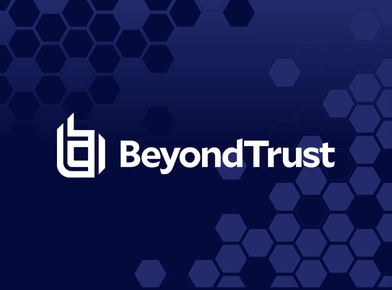The phrase “a dog is for life, not just for Christmas” was coined by British animal welfare charity Dogs Trust over 40 years ago and still rings true to this day. The same theory must also be applied to securing digital identities in our increasingly turbulent modern business world.
It’s all well and good having digital identity top of mind when Identity Management Day, on 11 April, but achieving identity security needs to be a key priority for all employees all day, every day. For example, we still see people checking work email accounts on unsecured WiFi networks, joining Zoom meetings from insecure personal devices, and opening suspicious emails. Potentially worst of all, millions of people worldwide still use the same passwords across multiple email and account logins – because it’s easier to remember a password they use regularly.
As a result, the vast majority of data branches still involve some form of human involvement. For instance, 82% of breaches in 2022 involved human error, the misuse of data or technology, or social attacks, according to Verizon’s 2022 Data Breach Investigations Report.
So this Identity Management Day is an opportunity to assess your business’ risk of identity-related attacks and drill home the importance of digital identity to your employees.
What Is Identity Management?
Identity management is the use of processes, tools, and technologies to ensure only authorized users can access the resources they need to perform their job role. Enterprises can use policies and technologies to ensure people are properly authenticated, authorized, and identified before they’re granted access to applications and systems.
Digital identities contain unique attributes and data for every user, and this information is used to deny or grant access to business applications and resources. Identities also change as users take on a new role, work from a new location, or log in from a new device, so identity management tracks these changes to ensure access levels are up to date.
Identity management tools also help to block unauthorized access attempts and raise alerts whenever they discover suspicious or harmful threats. This ensures unauthorized users can’t breach enterprise resources, such as hardware, networks, servers, and storage devices.
Why Identity Management Day?
Hackers are increasingly devising more sophisticated attack techniques to steal employee data, infiltrate user accounts, and circumnavigate businesses’ cyber defenses. However, these sophisticated techniques are rarely required as people make it relatively easy for cybercriminals to gain unauthorized access to their accounts.
Indeed, the majority of serious data breaches have resulted from compromised credentials. For example, the highly-publicized Colonial Pipeline and SolarWinds attacks occurred due to users deploying weak or compromised passwords, a lack of efficient security tools and protocols, and poor identity security practices.
Furthermore, 84% of organizations suffered an identity-related breach in the previous 12 months, according to our 2022 Trends in Security Digital Identities report. And 96% of those companies believed they could have minimized the damage had they implemented the right processes.
Identity Management Day is a global day of awareness to address this issue and inform business leaders, employees, and internet users how to strengthen their digital identities. It aims to advise people on better online security by sharing best practices and encouraging organizations to take action.
What Can I Do About Identity Management?
As a security practitioner, it’s your responsibility to set the strategy your security leaders need to implement a robust digital identity approach. To do that, you must understand your company’s security priorities and required outcomes.
The first step is to identify any vulnerabilities in your identity management by understanding your processes, tools, and technologies and the sensitive data your business has on record. It’s also vital to identify new cybersecurity risks and implement procedures and technologies that help you mitigate threats as quickly as possible. This process relies on ensuring proactive collaboration and engagement between your IT and security teams.
You then need to take action to protect corporate data. This includes applying the same identity concepts and processes across employee data, third-party, customer and consumer data, and non-human information. With the right tools and procedures in place, it’s vital to focus on automation to ensure data is fully protected and minimize the risk of human error. For example, discovering and deprovisioning orphaned accounts, as well as putting in place tools to automatically deprovision access across once it is no longer required.
Our research showed that organizations who had experienced an identity-related breach believed that it could have been prevented by focusing on identity-related security outcomes. Critical identity management capabilities that can help your business and users stay secure include:
Multi-Factor Authentication: MFA adds an extra layer of security when users log in to a software application or online account. It requires employees to verify their identity by providing an additional form of authentication, such as a one-time code or their fingerprint, after entering a password. MFA is vital to preventing unauthorized access, ensuring a hacker can’t access user accounts even if they steal the password. It’s also crucial to avoid account takeovers and boost users’ peace of mind.
Privileged access reviews. Accounts with privileged access are at the top of the food chain for cyber-attackers. Staying on top of who has expanded access is critical to protecting an organization’s most sensitive assets.
It’s important to evaluate your identity management and security foundation regularly to close the gaps that can be exploited.
Take Action This Identity Management Day
Securing digital identities is a crucial priority for every person across your organization, from security leaders to end users. As a security practitioner, you need to ensure the enterprise has the right processes, tools, and efficient lines of communication in place to discover and mitigate security risks as soon as they appear.
Ensure your company is doing its bit to secure digital identities and taking a BeIdentitySmart and BeCyberSmart approach by joining us this Identity Management Day. You can also discover all the recommended digital identity actions that can keep your business and employees secure in our Best Practices guide.











